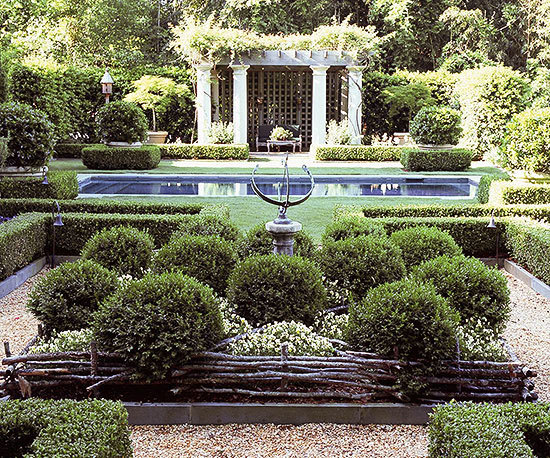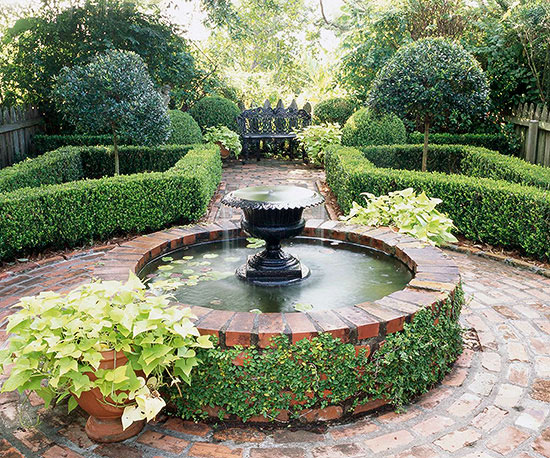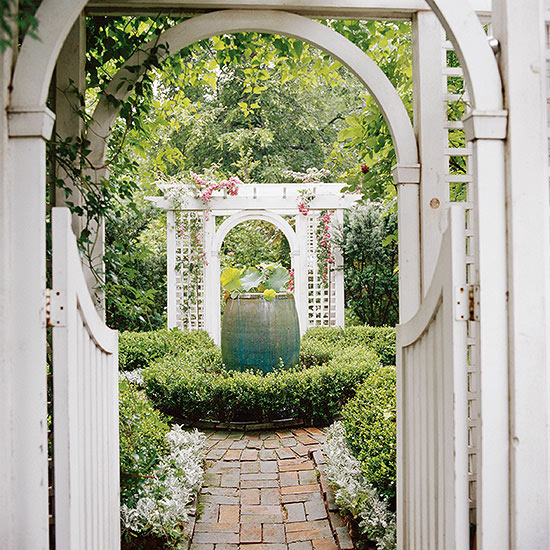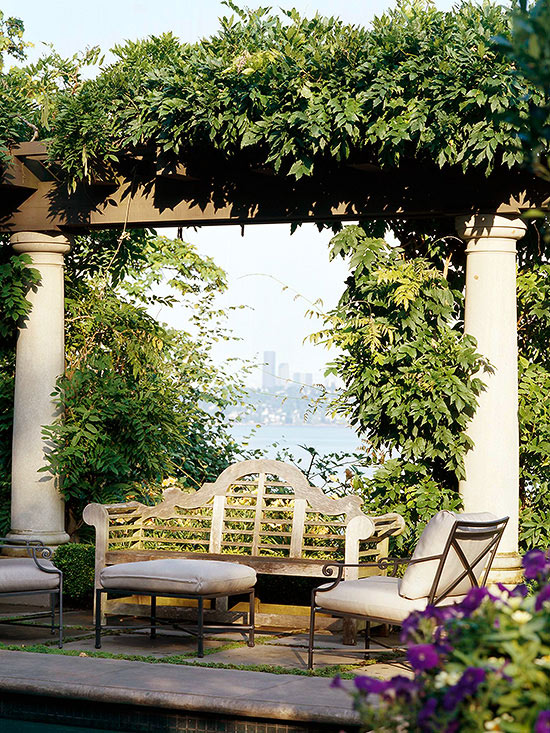






The Design
The best way to design a formal garden is to begin with a focal point -- a sculpture, an architectural feature such as a pergola, left, or a water source -- which draws the eye to the center of the garden. Flowerbeds, typically arranged in parallel geometric shapes such as rectangles, circles, or squares, usually surround the focal point. Paths that separate beds or lead to the garden also exhibit the same characteristics of defined shapes and edges, using materials such as brick, pea gravel, or crushed seashells. The overriding design element is symmetry. That may mean placing a mass of flowers inside a hedged bed or framing a walkway with pairs of trees (called an allee). Its rigorous, yet simple, design structure makes a formal garden easy to implement, even for a beginning gardener.
The Plants
There are no hard and fast rules when it comes to formal garden plants and flowers. Most of the time, color is more controlled than in, say, a cottage-style bed, but traditional gardens aren't necessarily monochromatic. That said, there are plants that you're likely to use in your formal gardens.

1. Hardscaping
Brick is often used for paths, walls, and edging in formal gardens because its geometric shape is a natural echo of the shapes that characterize these traditional spaces. Look at historic formal gardens, from those in England to estates in France and Italy, and you'll see brick used in different ways across different cultures. In addition, it's an excellent material for establishing a central axis to a focal point. Wood is typically used for lattice trellises, archways, pergolas, and arbors -- also classic structures in a formal garden. For a nod toward historical elements, consider a "folly." In the 18th century, a folly was a garden building that was more decorative than functional. Today, a potting shed is a better practical replacement for the folly of old.

2. Water Features
From fountains to reflecting ponds filled with lotuses or water lilies, water features are fantastic for adding gentle sound and reflective beauty to the formal garden. If the water feature is large enough, you can also incorporate a sculpture or statue. Use yours to mimic the geometry of the surrounding flowerbeds, from circular to square or rectangular.

3. Accents
Classic symbols of ancient or Greek Revival architecture -- pedestals, columns, pillars, sculptures, statuary, and urns -- are natural fits for formal gardens, as are potted plants shaped as topiaries or clipped into globes or swirls. Furniture, including benches and chairs, can be crafted of painted or unpainted wood or metal, and it may be used as a focal point for the whole garden or just as a centerpiece in a bed.
Copyright © www.100flowers.win Botanic Garden All Rights Reserved